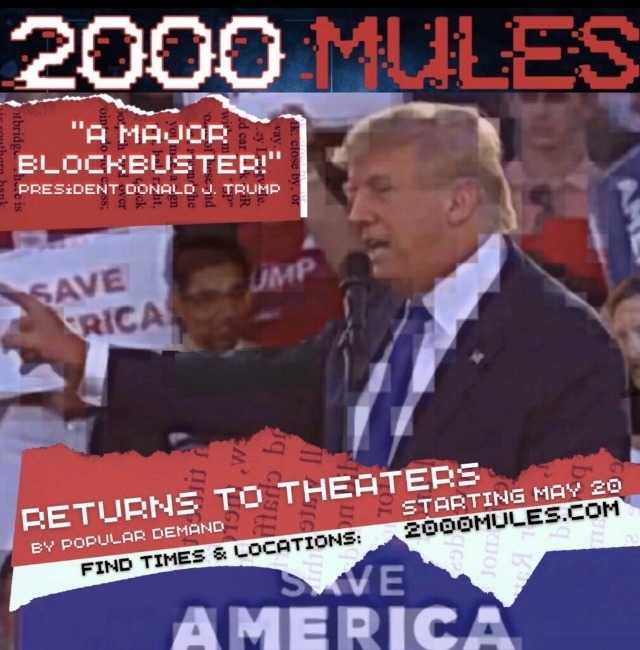
The mules also had to satisfy particular standards to be qualified as bonafide mules.Īccording to Engelbrecht, they set out to allow the "data to tell the tale." Phillips explains in the movie, "We put together a plan to see where the data would take us. In other words, TTV/OPSEC sought to avoid capturing individuals in their geo tracing that were merely passing by or who did not approach the dropbox. The criteria used to qualify as a ballot trafficker were purposely conceived by TTV to rule out false positives. Individuals or mules were paid $10 or more per ballot-according to witness interviews-to "pick up ballots from stash houses run by NGOs to run them to dropboxes." Engelbrecht states in the documentary, "So you have the collectors, on the one hand, you have the stash houses, which are the nonprofits, and then you have the mules that are doing the drops." It is illegal in all states to be paid for casting a ballot. In the 2020 election, multiple ballots were cast to dropboxes by many "mules" in numerous states and jurisdictions.
Citizen press 2000 mules movie#
Notably, Engelbrecht mentions in the movie that their data in Georgia was used by law enforcement as a test case to help law enforcement solve a cold murder case of a young girl.Ītlanta Crime/2000 Mules/Test Case Methodology of the TTV/OPSEC Investigationīallot trafficking is defined as the paid collection and casting or delivery of a ballot by an unauthorized third party. Much of the premise of the AP story is built around proof that cellphone data is not as precise as Justice Roberts describes in his opinion. Justice Roberts/2018 Opinion/Carpenter v. "Accordingly, when the Government tracks the location of a cell phone," writes Roberts, "It achieves near perfect surveillance as if it had attached an ankle monitor to the phone's user." Two of the most striking paragraphs from his 2018 opinion are captured below: United States, Justice Roberts wrote a 2018 opinion in which he describes the level of precision tracing afforded by pinging a cellphone using geofencing technology. In response to the 2016 Supreme Court case, Carpenter v. A court case on the precision of this technology makes that claim difficult to dispute. "Cellphone data is like digital DNA," Engelbrecht explained. Is Geospatial Data with Cellphones Precise?

She "received the request for comment at 11 p.m., and this story was published the next day."

Notably, the AP story states neither D'Souza nor Engelbrecht responded to "a request for comment." At least in Engelbrecht's case, she was given little to no time to respond. We will examine those claims, weaving in information from the movie and conversations with Engelbrecht over the weekend. The AP published a "hit piece" on May 3, attempting to expose TTV's "flawed analysis of cellphone location data and ballot drop box surveillance footage" presented in 2000 Mules. Phillips has been doing highly specialized work on elections globally for forty years but the technology used in this project has only been around for the past few years. Utilizing geospatial technology to ping cellphones using data from apps, Catherine Engelbrecht, founder of TTV, coordinated with Gregg Phillips' OPSEC team of cyber analysts to establish a "pattern of life." They then corroborated those anonymous cellphone data trails with publicly available dropbox surveillance videos. 2000 Mules, a 90-minute documentary produced by Dinesh D'Souza, is the visual tip of the ballot trafficking iceberg based on the digital evidence collected by True the Vote (TTV) and OPSEC.


 0 kommentar(er)
0 kommentar(er)
